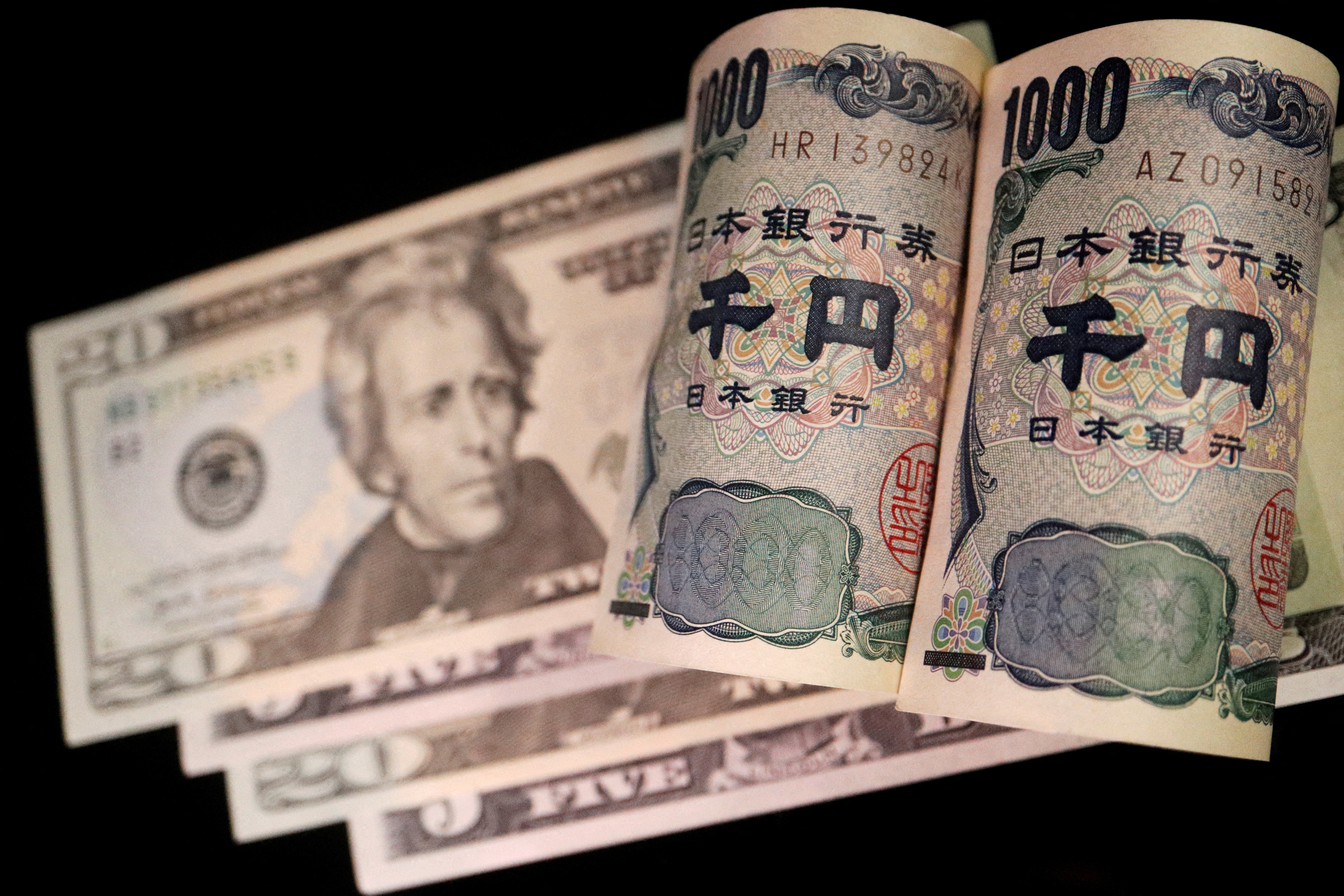
Banknotes of Japanese yen and U.S. dollar are seen in this illustration picture taken September 23, 2022. REUTERS/Florence Lo/Illustration/File Photo Acquire Licensing Rights
SINGAPORE, Oct 9 (Reuters) – The safe-haven dollar and Japanese yen edged higher on Monday as violence in the Middle East spooked markets, while a blowout U.S. jobs report gave the greenback a further leg up.
The Israeli shekel tumbled more than 3% to an almost eight-year low of 3.9880 per dollar early in the Asian session, before trimming some of those losses in volatile trade after the Bank of Israel announced it will sell up to $30 billion of foreign currency in the open market to maintain stability.
The shekel was last roughly 1.7% lower at 3.9069 per dollar.
Risk sentiment was fragile after Israeli forces clashed with gunmen from the Palestinian group Hamas over the weekend, hours after the militants launched a surprise attack on Israel in the deadliest day of violence in the country for 50 years.
That kept the Japanese yen – a traditional safe-haven currency – in bid, sending the risk-sensitive Australian dollar sliding nearly 0.8% to 94.61 yen .
The euro similarly fell roughly 0.4% to 157.45 yen in thinned Asian trade, with Japan closed for a holiday.
Against the dollar, the yen last bought 149.21 .
“As you’d expect, there’s a lot of uncertainty out there this morning in the markets,” said Tony Sycamore, market analyst at IG Australia.
“Where some of these risk-aversion moves are going to play out in the (currency) space, the dollar will remain bid… (and) the yen should start to see some more support coming in, but potentially, that’s more on the crosses.”
Elsewhere, the dollar was likewise broadly higher, sending sterling down 0.31% to $1.2194. The euro lost 0.32% to trade at $1.0553.
The Australian dollar , seen as a proxy for risk appetite, slid 0.59% to $0.6347, while the New Zealand dollar edged 0.36% lower to $0.5968.
“There is demand for the U.S. dollar across the board, just because of that safe haven,” said IG’s Sycamore.
The dollar index was last 0.1% higher at 106.33, drawing additional support from Friday’s data showing U.S. employment increased by the most in eight months in September, potentially setting up for a higher-than-expected inflation print later this week.
“(The) resoundingly strong employment report will likely keep the (Federal Open Market Committee) on guard as it watches for signs that a tight labor market could prevent inflation from returning to 2% on a sustained basis,” said economists at Wells Fargo.
“Another rate hike before the end of the year is a possibility, but for now our base case remains that the last rate hike of the tightening cycle occurred in July.”
Market pricing shows a roughly 78% chance that the Federal Reserve will keep rates on hold at its November policy meeting.
In Asia, China returns from its Golden Week holiday. The country’s foreign exchange reserves fell more than expected in September, official data showed on Saturday.
The onshore yuan held steady and last bought 7.2960 per dollar.
Reporting by Rae Wee; Editing by Jamie Freed and Lincoln Feast
Our Standards: The Thomson Reuters Trust Principles.



